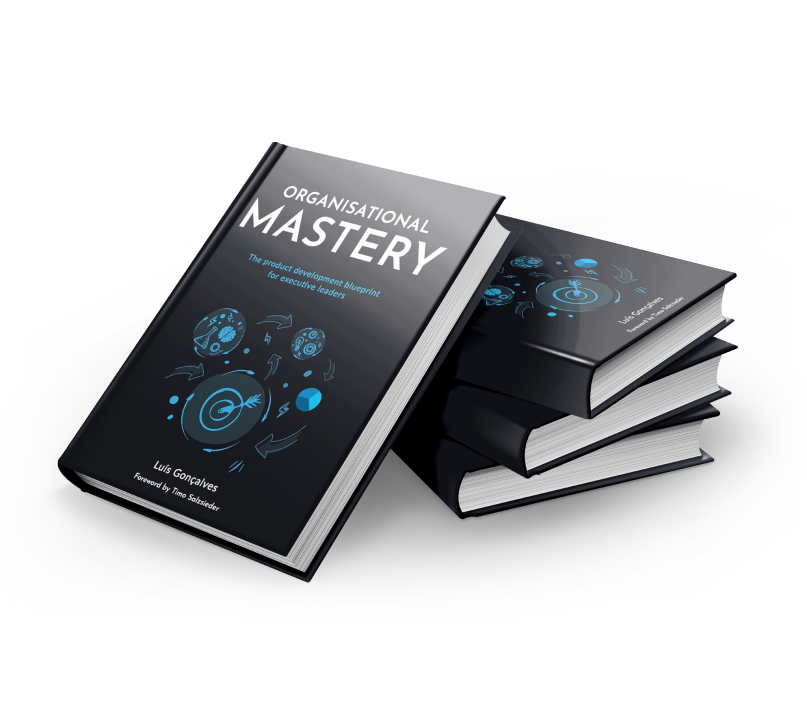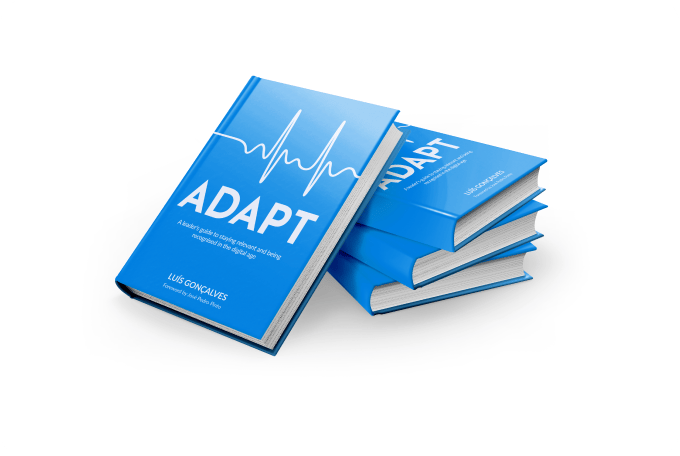Share this
Lean Change Management - A New Approach To Introduce Changes
by Richard Atherton on Jan 13, 2024 6:07:54 AM
In the autumn of 2014, I led a pitch to execute a large change programme for a major broadcaster. On the Request for Proposal, they had asked that we take an agile approach. I have an Agile software development background. However, my experience of using Lean or Agile techniques for managing change? Zero.
[sc_product_cta product_title="Will You Succeed Or Fail As A Leader In Designing Your Digital Product Company?" product_description="If you want to know more about your company's digital product development maturity just take this scorecard. It will help you to identify all the different areas that you can improve and build a truly Digital Product Company." product_img="6440" cta_url="https://digitalproductmaturity.scoreapp.com/?utm_source=ADAPT_Methodology&utm_medium=CTA_Box&utm_content=Project to Product&utm_campaign=ADAPT_Scorecard" cta_url_button_text="TAKE THE SCORECARD" /]
Enter Jason Little’s ground-breaking book, Lean Change Management. After reading Jason's book, I transformed my approach to leading that change programme. I experienced plenty of bumps along the road in learning this approach. However, implementing these ideas helped me lead one of the most successful change initiatives I've ever been involved with.
So, why Lean Change Management? Quite simply; it works better. We know that taking Lean and Agile approaches have proved significantly more effective in developing software. However, as change leaders and managers, we work at a level of complexity equalling if not exceeding that of software challenges. When we take a Lean/Agile approach, we markedly improve our effectiveness.
Writer Beatrice Kaufman once said:
“I’ve been poor and I’ve been rich. Rich is better!”
When it comes to change approaches, I can say:
“I’ve used traditional and I’ve used Lean/Agile. Lean/Agile is better!”
So how is Lean Change Management different?
Lean Change Management differs from traditional approaches in five major ways.
1. People-first, not process-first
In many of the traditional change methods, we place a major emphasis on process. Let's take Kotter’s 8 Steps. His approach is characterised as a set of steps to follow, from Establishing a Sense of Urgency through to Anchoring New Approaches in the Culture. Now, of course, Kotter’s work provides great wisdom. But, the issue with this and other approaches is the emphasis on the sequence of ‘best practice’ activities.
With Lean Change Management, we do have a loosely defined framework to design experiments. However, there is no overarching methodology for executing change. The key principle is to co-create change with the people affected, in whichever manner and sequence make sense in context.
2. Co-creation not consultation
In traditional change programmes, the central engine is a change team. They interview those affected, create change readiness assessments, design new processes, construct communication plans and so on.
When they do take your views, they analyse, synthesize and consolidate these inputs into 'programme documentation'. When the change managers present this back to people, it can seem like a jumble of corporate platitudes, or worse, something totally unrecognisable.
In the Lean Change Management paradigm, we see the central engine as an act of co-creation. Change agents and those affected design all aspects of the change initiative together.
3. Experiments do not change activities
In traditional change programmes, the main currency changes activities. Activities are broken down into tasks on a plan. The team must do these interviews, those workshops, this presentation, that skills assessment.
In Lean Change Management, the main currency is experiments. From a design perspective:
- Which type of experiment?
- Who with?
- How to prepare?
From a management perspective:
- What’s the maximum number of experiments we can execute at once?
- Which ones failed?
- Which succeeded?
- What did we learn?
We also acknowledge that any experiment successfully adopted will itself change the System. This new landscape provides us with the canvas to further experiment. This is a major mindset shift from the concept of a carefully crafted set of dependent change activities laid out on a plan, with a defined start and end point.
4. Feedback-driven not plan-driven
In traditional change, the change team coordinate all activities via a central plan. Much effort is spent maintaining that plan and tracking variance. There are three major risks in this approach.
Risk 1: Responsiveness
When being driven by a plan, the change initiative itself is much less responsive. Changing the direction of the change effort itself becomes much more expensive in traditional approaches. As the effort continues, it becomes increasingly hard to course-correct as the environment changes or underlying assumptions prove to be invalid.
By contrast, feedback from experiments drives Lean Change initiatives, with a strong focus on giving those affected a strong voice. Lean change agents create fora with a high degree of psychological safety. This means people at any level of the hierarchy can feedback and directly influence the next experiments for the team to conduct.
Crucially, lean change agents design the initiative such that it can be highly responsive to this feedback. Using kanban-style flow-based management of the change effort, the team can course-correct easily in response to feedback.
Risk 2: Horse before cart
The second risk of a plan-driven approach relates to Pournelle’s Iron Law of Bureaucracy. The law states the following:
“In any bureaucracy, the people devoted to [] the bureaucracy itself always get in control and those dedicated to the [authentic] goals [] have less and less influence...”
As the English might say it, "putting the cart before the horse". When we orchestrate change using traditional methods, we typically create a central function to plan and coordinate. By doing so, we create a greater risk of the Iron Law asserting itself. Namely, the risk that the planning functionaries become more powerful that those authentically committed to achieving change.
Risk 3: Self-fulfilling illusions
The final risk is that when we create large, centrally-managed programmes of change, we put many professional reputations at stake. In such a situation, the people around the change team adapt to provide the illusion that change is happening. Those in charge of the programme see want they want to see and those affected tell them want they want to hear.
Whilst accepting that some level of high-level planning and bureaucracy may be valuable, Lean Change agents approach management differently. They use a lightweight approach to planning and commit themselves to rapid ‘feedback-and-respond' cycles.
5. “Catch the wave” don't “initiate and drive”
The fifth and final differentiator of Lean Change lies in the fundamental premise of how change happens. In traditional approaches, people believe that change happens when senior authority figures lead people to a new way of operating.
The Lean Change approach sees change as a social movement; a viral effect ignited by leaders potentially anywhere in the organisation.
The basic paradigm for traditional change programmes goes something like:
- Senior executive identifies an issue
- Senior executive secures budget and resources to ‘implement change’
- Change team create vision, scope and plan to drive through the changes
Change as a social movement
Lean Change turns this on its head. In Lean Change, the approach looks more like:
- Senior executive or manager identifies an issue
- Change agents scan the landscape for emergent responses to this issue- the ‘loan nuts’ and their ‘first followers’ trying something new
- Change agents work with these activists or provide spaces for these activist to emerge, to amplify their impact and accelerate the change through further experimentation
Here we see the role of the change agent not principally as a designer and a planner, although this might be part of their job. Rather, we see the change agent as a scanner, an enabler and a protector of disruptors. They are second, equally important role, is to work with those being disrupted. As George Koenigsaecker puts it in his book ‘Leading the Lean Enterprise Transformation’:
"If you only support [the activists], the antibodies will get more active and will multiply, offsetting the impact of your [activists]"
So, the change agent must, on the one hand, support the disruptors, and on the other, work attentively and assiduously with those being disrupted. The more these groups see a change as a threat, the more powerful their response to neutralise that threat. This is where the change agent must work hard to constantly maintain an open dialogue. They must listen, empathise, be straight and engage in ongoing co-creation with those affected.
In conclusion, Lean Change is a co-creation-led, responsive and experimental approach to change. It sees change as a social movement.
Working with evolution4all
At evolution4all we have developed the “Organisational Mastery” product. The aim of this product is to create a coalition that drives change and internal innovation alongside shared knowledge throughout the organisation. It's extremely suitable for companies that want drastically improve the alignment between executive leadership and delivery teams.
[sc_pathway pathway_title="ORGANISATIONAL MASTERY SCORECARD" pathway_description="We have developed a free assessment in the form of a Scorecard to help you establish which areas of business you need to focus on to achieve your particular Organisational Mastery." pathway_button_text="Take The Test Now!" pathway_button_url="/scorecard?utm_source=web&utm_medium=Blog - From Organisational Mastery&utm_campaign=Lean Change Management - A New Approach To Introduce Changes" /]
We provide Team Coaching, Agile Training, and Agile Consulting, OKR Training, OKR Consulting, Innovation Training and Innovation Consulting.
With my team, I built 5 main products: High Performing Teams, Scrum Team Coach, Scrum Master Mentoring, Organisational Mastery and the External Business Accelerator.
[sc_product_cta product_title="Will You Succeed Or Fail As A Leader In Designing Your Digital Product Company?" product_description="If you want to know more about your company's digital product development maturity just take this scorecard. It will help you to identify all the different areas that you can improve and build a truly Digital Product Company." product_img="6440" cta_url="https://digitalproductmaturity.scoreapp.com/?utm_source=ADAPT_Methodology&utm_medium=CTA_Box&utm_content=Project to Product&utm_campaign=ADAPT_Scorecard" cta_url_button_text="TAKE THE SCORECARD" /]
Share this
- Agile Methodologies (18)
- Product Strategy (18)
- OKRs (16)
- Scrum (16)
- Product Mindset (14)
- Project To Product (10)
- Agile Retrospectives (9)
- CoPs (9)
- Knowledge Sharing (9)
- Time To Market (8)
- Product Discovery (7)
- Continuous Improvement (5)
- Strategy (5)
- Scrum Master (4)
- Content Marketing Strategy (3)
- Product Owner (3)
- Technical Excellency (3)
- Digital Transformation (2)
- Innovation (2)
- Scaling (2)
- Team Building (2)
- Business Model (1)
- Cost Of Delay (1)
- Customer Feedback (1)
- Customer Journey (1)
- Customer Personas (1)
- Design Thinking (1)
- Digital Leadership (1)
- Digital Product Tools (1)
- Go To Market Strategy (1)
- Google Design Sprint (1)
- Lean Budgeting (1)
- Lean Change Management (1)
- Market Solution Fit (1)
- Organisational Impediments (1)
- Outsourcing (1)
- Product (1)
- Product Metrics (1)
- Product Roadmaps (1)

Organisational Mastery
Get your free copy

ADAPT
Get your free copy

Product First
Get your free copy
